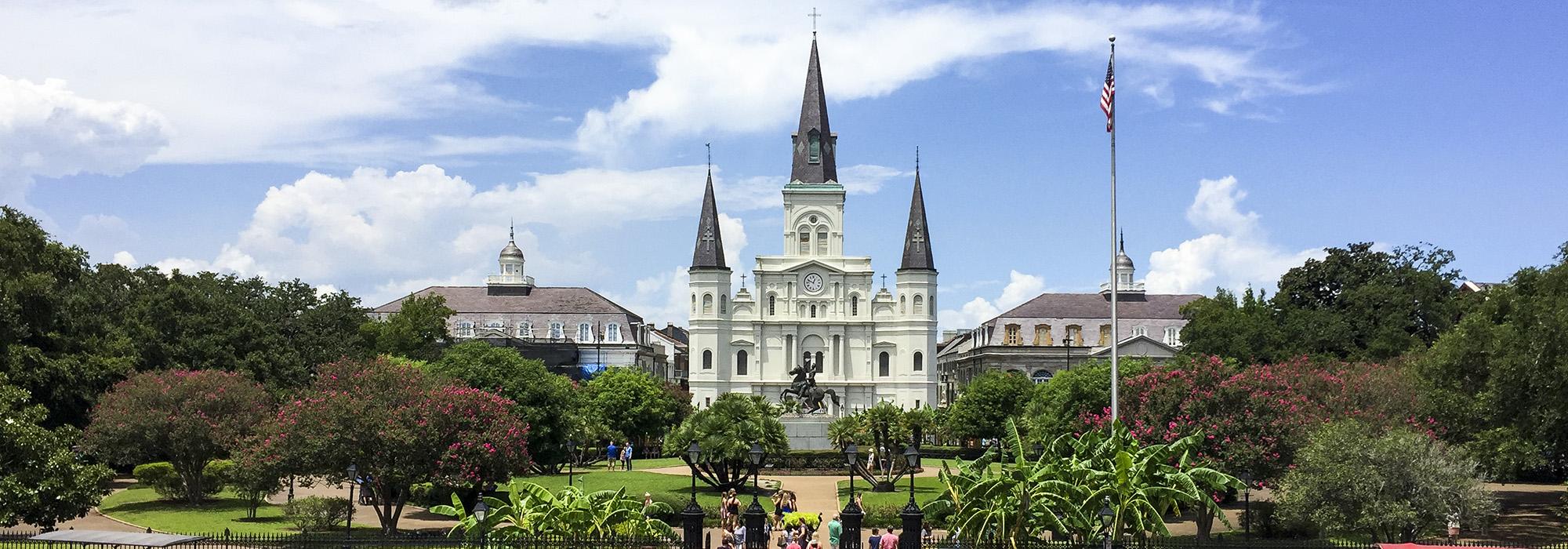New Guide to New Orleans’ Cultural Landscape Legacy – What’s Out There New Orleans Includes Dozens of Sites Spanning City’s Three-Century Legacy
Media Contact: Nord Wennerstrom | T: 202.483.0553 | M: 202.225.7076 | E: nord@tclf.org
New Guide is Part of The Cultural Landscape Foundation’s Ongoing Series of Print and Online Guides Chronicling North America’s Cultural Landscape Legacy
Washington, D.C. (October 21, 2016) – The Cultural Landscape Foundation (TCLF) today announced the launch of the What’s Out There New Orleans guidebook and website featuring dozens of cultural landscapes throughout the city. What’s Out There New Orleans, will be unveiled at a sold out reception at the Curtis House in the uptown University District in conjunction with the annual meeting in New Orleans of the American Society of Landscape Architects, October 21-24, 2016, during which more than 6,000 practitioners will visit New Orleans. It is TCLF’s fourteenth printed guidebook and eighth online guide in an ongoing series chronicling North America’s cultural landscape legacy (the guidebook is available for purchase on TCLF’s website and can be downloaded as a free PDF). Additionally, in 2017 a What’s Out There Weekend New Orleans will be held featuring free, expert-led tours of many of the sites featured in the printed and online guides. What’s Out There New Orleans is made possible by sponsors NOLA Parks for All, Victor Stanley and the American Society of Landscape Architects, Louisiana Chapter. Additional support was provided by the Turner Family Foundation, Sheila and Tommy Lemann, the Zemurray Foundation, and Shaun and Foster Duncan.
New Orleans’ cultural landscape legacy include the iconic, early eighteenth century Vieux Carré Historic District and the late twentieth century Postmodernist Piazza d’Italia, along with antebellum plantations, Picturesque-style parks, gardens, and cemeteries, institutional grounds and others, making it one of the nation’s most distinct destinations. The 68-page printed guidebook includes 50 sites, while the online guide launches with 66 sites and will continue to grow. The guides include maps locating all of the sites, along with information about the landscape types and styles, designers, those listed in the National Register of Historic Places and related material. The guides are designed for the general public, including residents curious about sites in their neighborhood, as well as tourists, heritage travelers, students and others interested in the city’s diverse landscapes.
The entries about New Orleans’ landscapes are part of TCLF’s What’s Out There database of North America’s cultural landscape legacy, which currently features more than 2,000 sites, 900 design profiles, and 11,000 images. The database is optimized for iPhones and similar handheld devices and includes What’s Nearby, a GPS-enabled function that locates all sites within the database within a 25-mile radius of any given location.
"We are glad to have contributed to this enduring gift to the City. It's important in telling the story of New Orleans and will be used and enjoyed by its citizens and visitors alike," said Scott Howard, President of NOLA Parks For All.
“We appreciate the work by TCLF and many volunteers in creating this guide that will help connect people to landscapes across New Orleans,” said Gregory Grandy, President of the Louisiana Chapter of the American Society of Landscape Architects. “From Jackson Square to the Lafitte Greenway, New Orleans has great public spaces which have deep historic connections and are significant to the experience of residents and visitors to this great city.”
“The New Orleans guides would not be possible without the support of many people throughout the city,” said Charles A. Birnbaum, TCLF’s president & CEO. “The city is known for its distinct architecture, but it has an equally significant landscape legacy that is rich and fascinating to discover.”
The Cultural Landscape Foundation (TCLF) is a 501(c)(3) non-profit founded in 1998 to connect people to places. TCLF educates and engages the public to make our shared landscape heritage more visible, identify its value, and empower its stewards. Through its website, publishing, lectures and other events, TCLF broadens support and understanding for cultural landscapes.
# # #



